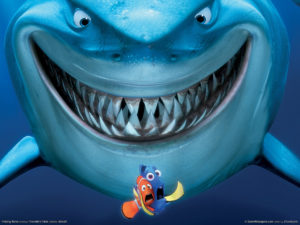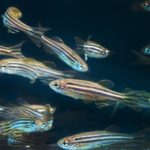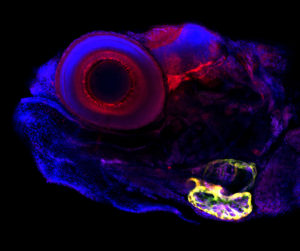
When most people think about “Finding Nemo,” they likely think about Nemo, the adventurous young clownfish who got caught up in a fishy situation (no pun intended) and ended up in a dentist’s fish tank. Or, they might remember Marlin, the overprotective father. However, what about Dory? Though some might characterize Dory as loopy, she was the real hero who saved Marlin and Nemo’s lives and reunited father and son. Who would have thought that the loopy blue tang fish would be the unsung hero?

Just like Nemo, humans have their own fish hero too: the zebrafish. The zebrafish is a tropical freshwater fish that is currently used in many research labs as a powerful model organism for studying various diseases such as heart disease, cancer, diabetes, and gastrointestinal disease. You might be thinking that there is no way a 3-5 cm fish, with fins and no lungs, can model human disease; humans are extremely different from zebrafish. However, zebrafish are much more similar to people than one might initially think. In fact, according to a paper published in Nature, 84% of genes known to be associated with human disease have a zebrafish counterpart. You might also be wondering why not use mice? After all, they’re at least mammals. Good question!
Zebrafish models actually have many advantages over mouse or rat models:
- Zebrafish reproduce more frequently (every week) than mice and rats.
- Zebrafish can easily be genetically manipulated to study a disease; it takes less time to generate a zebrafish mutant line than a mouse mutant line.

Picture above shows zebrafish blood vessels labelled in red and lymphatic vessels labelled in green - In zebrafish, important pathways can be easily blocked and examined by simply adding the drug to the water. This allows for more cost effective and faster identification of new drugs and new uses for current drugs.
- The zebrafish is see-through; fluorescence markers can be used to “highlight” various cells in tissues and organs. Imagine being able to see individual cells migrate from one location to the next and form an entire heart that begins to beat 24 hours later- in real time. THAT’S AMAZING!
Other advantages of the zebrafish are disease specific. For example, zebrafish are an advantageous model for studying congenital heart disease because they can survive severe cardiac defects that are typically lethal in mice. Therefore, the zebrafish model allows scientists to follow a disease longer than they would be able to in a mouse model. Zebrafish models of heart failure have been found to exhibit similar defects to those found in patients with heart disease. In addition, zebrafish heart models have provided genetic evidence that certain signaling pathways protect humans against heart problems.

One of the major reasons why people succumb to heart attacks is because heart cells get damaged and die; heart cells have little to no capability to regenerate (make more of themselves). The zebrafish heart, on the other hand, has the capability to regenerate and replace injured heart tissue after damage. Therefore, scientists are using the zebrafish to figure out what factors or pathways are involved in that process, so they may be able to help the human heart heal itself after being damaged during a heart attack. Heart disease is the leading cause of death in the U.S. and worldwide; so, many lives can be saved with the help of a little striped fish, like Dory.
With that in mind, it’s probably safe to say that fish are friends (and not just food).
Peer edited by Breanna Turman.
Follow us on social media and never miss an article:
One Reply to “Getting to the Heart of the Matter: “Fish are friends, not food””